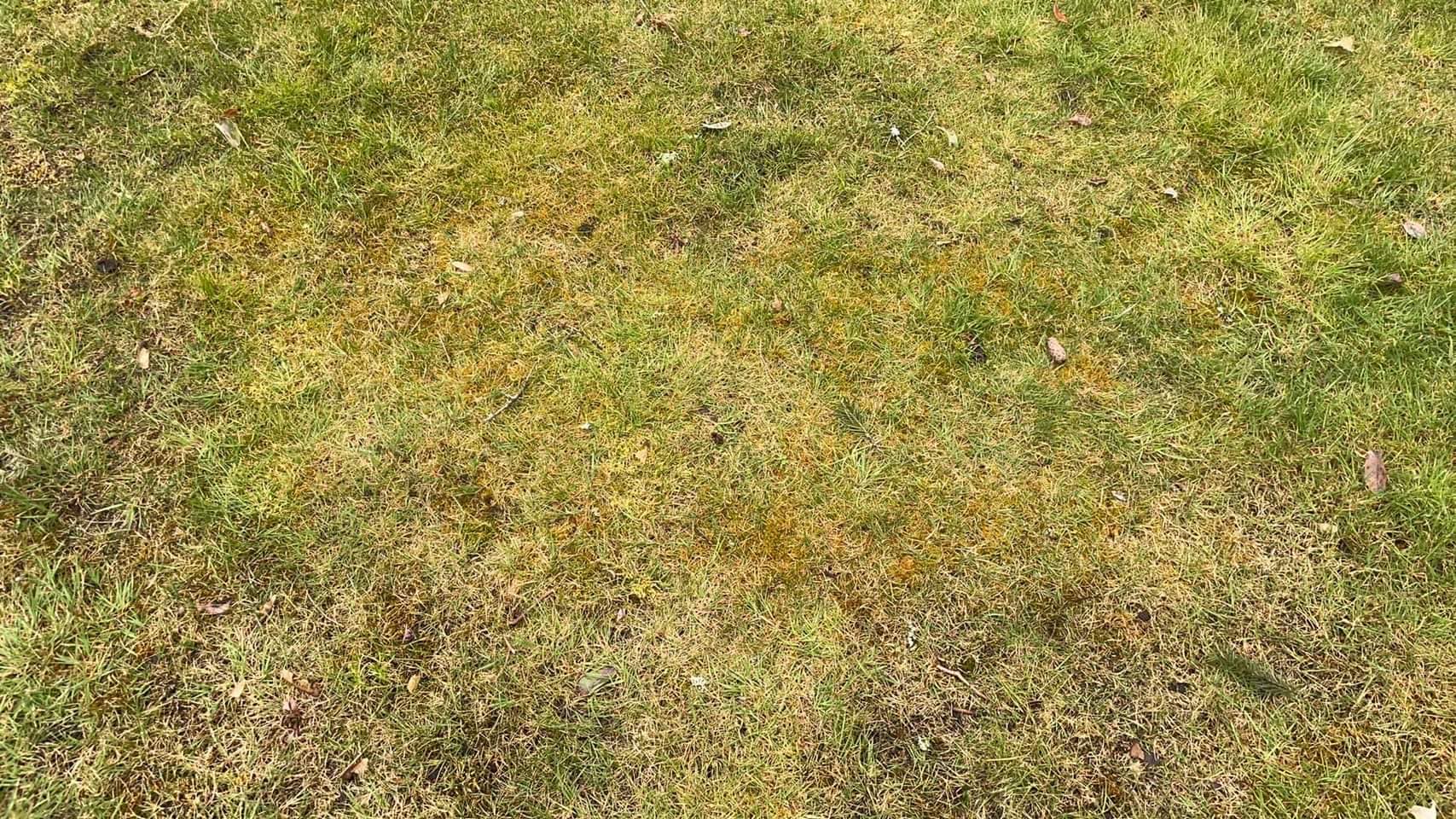LAWN PHIX PRO TIPS
A wet winter in 2024 has contributed to the surge in moss growth. I am getting a lot of questions and concerns about moss now. While it may be tempting to rip it up this spring, remember these factors before doing so.
- Moss thrives due to environmental factors – specifically in dense shade, excessive moisture, poor drainage, and low soil pH.
- A well-balanced lawn care and nutrition plan can help correct soil deficiencies and acidic soil.
- pH balancing with lime applications.
- Iron, specifically ferrous sulfate, will temporarily kill moss.
- Consider first implementing better cultural practices:
- Pruning trees and landscape canopies to allow for more sunlight.
- Address water runoff, pooling, and drainage issues.
- Annual core aeration can help improve soil compaction and drainage.
Although some people choose to grow moss intentionally in areas of their garden and landscape, moss growth can also be a sign of a struggling lawn that suffers from problems like poor drainage and compacted soil. A mossy lawn can appear unsightly to many gardeners, and it can also be extremely slippery to foot traffic. Primitive plants and moss plants are different from other plants that commonly grow in yards. Moss plants lack vascular systems and roots, which is why many conventional weed killers often don’t kill lawn moss. However, with the following tips, you can get rid of lawn moss and prevent it from overtaking your existing lawn.
Table of Contents
What Is Moss?
Having evolved from algae, mosses are ancient, spore-producing land plants that have stems but don’t produce flowers. There are roughly 1,200 species of moss, making them one of the most diverse groups of plants. Common types of lawn moss thrive in acidic or infertile soil with poor drainage. Without roots, they typically absorb water and nutrients through their rhizoids. Moss loves shady areas and can often grow in places where other plants cannot like on rocks, concrete, and other surfaces. Lawn moss isn’t particularly harmful to grass like other weeds, but it can prevent grass from growing once it gets a foothold in a patch of soil, and it is a sign of a struggling lawn or acidic soil with poor drainage.
Moss Identification
Lawn moss is low-growing and tends to have a velvety texture. Colors can range from light to deep green. Some mosses even have luminescent properties. Lawn moss tends to grow only a few centimeters in height but often grows to form thick, dense mats. These plants do not spread by seeds but rather by spores.

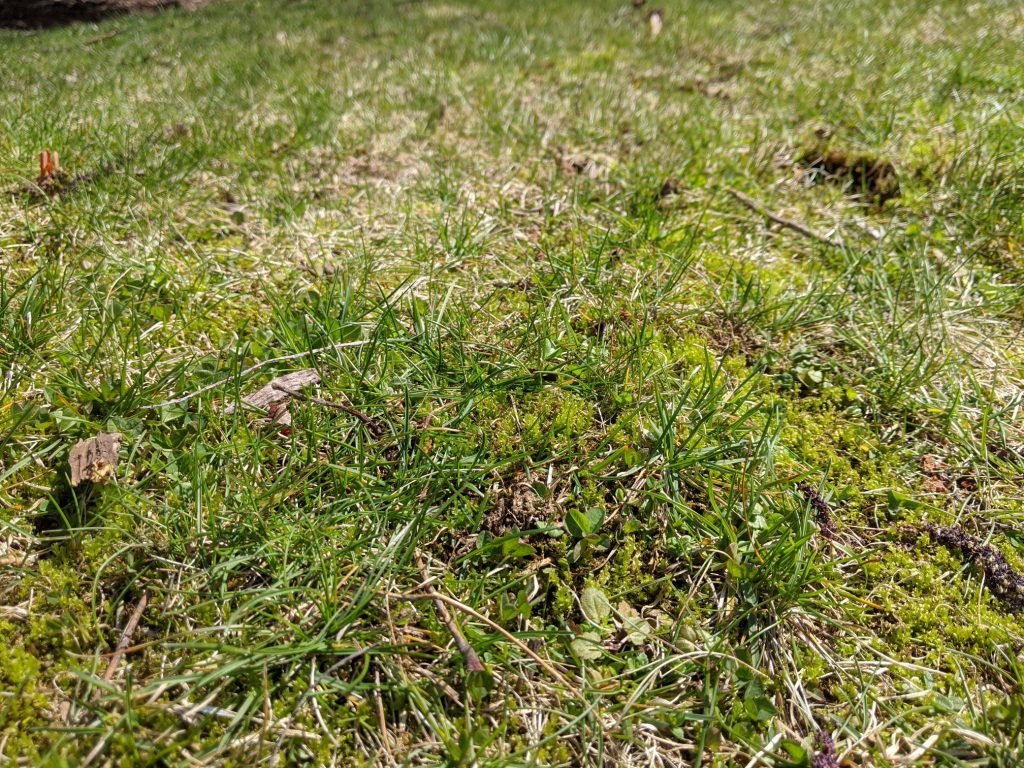
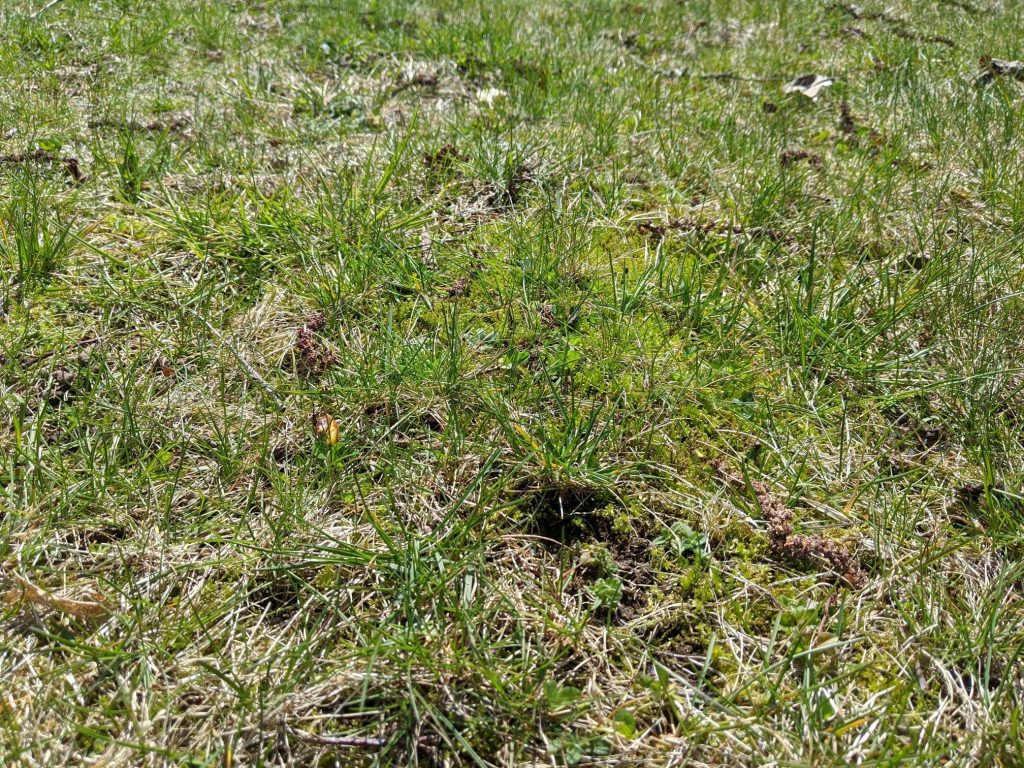
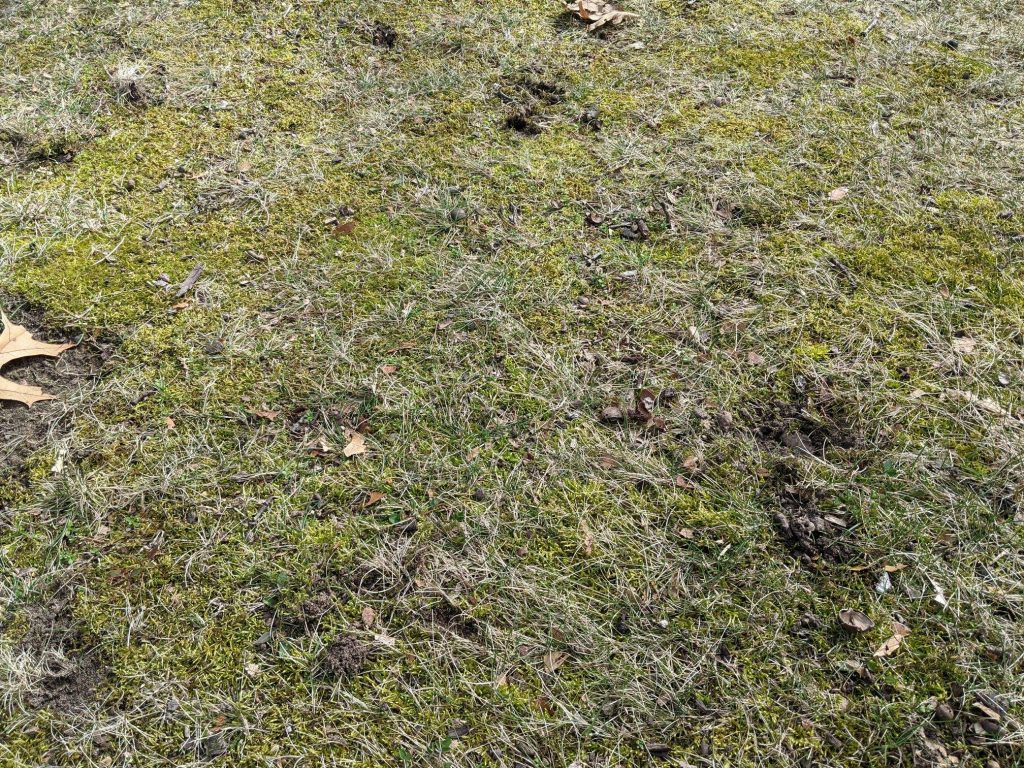
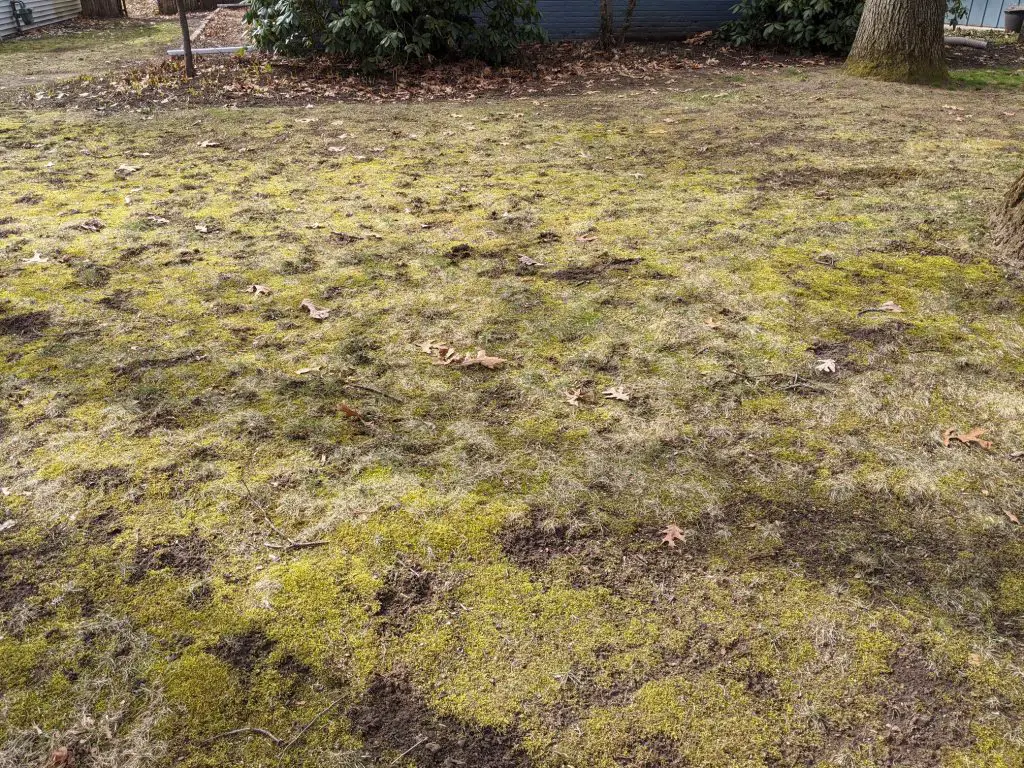
How Does Moss Thrive?
Moss often thrives in soils where grass and other plants do not, which is why you might spot moss growth in sidewalk cracks, on rocks, or on logs. Moss grows well in excessive shade, tolerates soil compaction and highly acidic soil, or even in infertile soil. Some gardeners searching for a shade tolerant grass or ground cover often choose moss because of its ability to thrive in challenging locations.
Shady Spots
It can be difficult to maintain a thick green lawn in excessive shade, but moss doesn’t require a lot of sunlight to thrive. Moss does not thrive in direct sunlight.
Poor Drainage
Moss loves wet areas. These prehistoric plants evolved from algae and are among the earth’s first land plants. They’ve retained their love of moisture-rich habits.
Low pH
Lawn moss prefers acidic soil with a soil pH of 5.0 to 5.5. Soil with a low pH is more conducive to moss growth than to healthy grass growth. If you have a mossy lawn, conduct a soil test to check its pH.
Soil Compaction
Soil compaction is a problem for grass, but not for moss. Since moss doesn’t have roots that need to grow through that tough compaction to soak up water and nutrients, it can thrive where most types of green grass cannot.
How to Get Rid of Moss
Gardeners have various options to get rid of moss. Keep in mind that the best time to get rid of moss is when these plants are actively growing. Many people aim to kill moss in late spring and early fall. You can also kill moss in early spring and during the summer. If you don’t want to use moss killer to get rid of moss, you can try to kill existing moss with dish soap or baking soda and water solution; however, this isn’t likely to prevent future lawn moss from growing in your yard. You can try to remove lawn moss by raking and dethatching your lawn as well.
Ferrous Sulfate
Ferrous sulfate will kill moss quickly. This iron substance draws out moisture from moss. After applying it to existing moss, the plants will dry up, turn brown or black, and die.
Lime / Iron Sulfate
Lime and iron sulfate are very efficient for killing moss in lawns. Iron sulfate, for instance, is typically included in lawn fertilizers, so it won’t harm your grass. Lime will allow you to correct your acidic soil. You can perform a soil test to determine if your soil is acidic. Applying lime to correct your acidic soil will prevent moss from growing in the future.
Chemicals
You can also use chemicals to kill moss in your lawn, but these may not all be effective because moss lacks a vascular system and may not respond to herbicides like other weeds do. Unfortunately, products with glyphosate will not only kill moss, but also any other plants it comes into contact with like your healthy green grass. Even so, if you’re struggling to control moss and other lawn weeds, you may need to use stronger herbicides. To control lawn moss, most gardeners will try other methods first.
How to Prevent Moss
You can prevent lawn moss from growing by maintaining healthy grass. Moss in your lawn is a sign of unhealthy lawn or soil problems. In many cases, the area may be too shady to support the type of grass you’ve chosen to plant.
Fix Environmental Issues
To prevent moss growth, you should take steps to make your lawn environment less hospitable to its growth–and more conducive for supporting healthy grass. First, remove lawn moss that’s growing or use a moss killer. Then, conduct a soil fertility test. If your soil is too acidic, amend it with lime. Correct soil drainage issues. Try to aerate and re-seed the soil if it’s compacted in bare spots. Removing thatch and trimming trees to allow more sunlight can also help you prevent moss growth and support a healthy lawn.
Grow Shade-Tolerant Grass
If your yard is too shady for the type of lawn you have planted, consider growing a shade-tolerant grass or groundcover instead. Non-traditional lawns can be quite beautiful and thrive in your particular growing conditions.
Lawn Moss FAQs
How do I get rid of my lawn moss?
Controlling moss effectively often means taking measures to correct your soil or introduce more sunlight to your yard. Improve drainage and amend your soil with lime if it’s overly acidic to prevent moss growth. These steps will encourage healthy grass growth.
Why is my lawn full of moss?
Your lawn is full of moss because it supports conditions that are ideal for moss growth. These conditions typically include: infertile soil, overly acidic soil, poor soil drainage, and excessive shade. Soil compaction can also promote moss growth.
What kills moss permanently?
Ferrous sulfate and chemicals like glyphosate can kill moss. However, the best way to prevent moss from returning in the future is to correct the conditions in your lawn that support the growth of moss.
What kills moss naturally?
Iron substances such as ferrous sulfate kill moss naturally. If you don’t want to use herbicides that contain glyphosate, which also kills moss and other weeds, you can make a water solution using lukewarm water and baking soda or a few drops of dish soap to kill moss.

